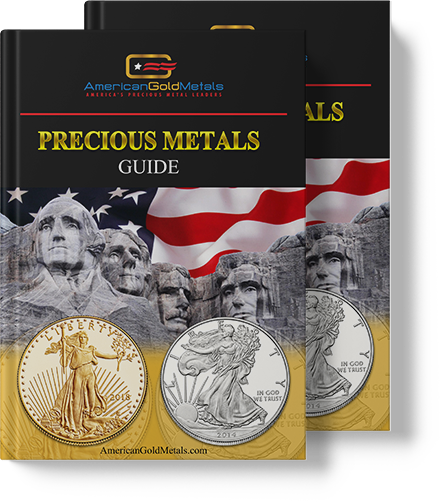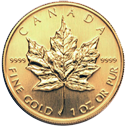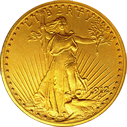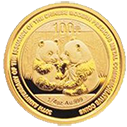British Sovereign
The sovereign is a gold coin of the United Kingdom, with a nominal value of one pound sterling. Struck from 1817 until the present time, it was originally a circulating coin accepted in Britain and elsewhere in the world; it is now a bullion coin and is sometimes mounted in jewelry. In most recent years, it has borne the well-known design of Saint George and the Dragon on the reverse—the initials (B P) of the designer, Benedetto Pistrucci, may be seen to the right of the date.
The coin was named after the English gold sovereign, last minted about 1603, and originated as part of the Great Recoinage of 1816. Many in Parliament believed a one-pound coin should be issued rather than the 21-shilling (£1.05) guinea struck until that time. The Master of the Mint, William Wellesley Pole, had Pistrucci design the new coin, and his depiction was also used for other gold coins. Originally, the coin was unpopular as the public preferred the convenience of banknotes, but paper currency of value £1 was soon limited by law. With that competition gone, the sovereign not only became a popular circulating coin, but was used in international trade and in foreign lands, trusted as a coin containing a known quantity of gold.
The British government promoted the use of the sovereign as an aid to international trade, and the Royal Mint took steps to see that lightweight gold coins were withdrawn from circulation. From the 1850s until 1932, the sovereign was also struck at colonial mints, initially in Australia, and later in Canada, South Africa and India—they have been struck again in India since 2013 (in addition to the production in Britain by the Royal Mint) for the local market. The sovereigns issued in Australia initially carried a unique local design, but by 1887, all new sovereigns bore Pistrucci’s George and Dragon design. Strikings there were so large that by 1900, about 40 per cent of the sovereigns in Britain had been minted in Australia.
With the start of the First World War in 1914, the sovereign vanished from circulation in Britain, replaced by paper money, and it did not return after the war, though issues at colonial mints continued until 1932. The coin was still used in the Middle East, and demand rose in the 1950s, which the Royal Mint eventually responded to by striking new sovereigns in 1957. It has been struck since then both as a bullion coin and, beginning in 1979, for collectors. Though the sovereign is no longer in circulation, it is still legal tender in the United Kingdom.
| United Kingdom | |
| Value | 1 pound sterling |
|---|---|
| Mass | 7.98805 g |
| Diameter | 22.05 mm |
| Thickness | 1.52 mm |
| Edge | Milled (some not intended for circulation have plain edge) |
| Composition | .917 gold, .083 copper or other metals |
| Gold | .2354 troy oz |
| Years of minting | 1817–present |
| Mint marks | Various. Found on reverse on exergue between design and date for Saint George and the Dragon sovereigns, and under the wreath for shield back sovereigns. |
| Obverse | |
|
|
|
| Design | Reigning British monarch (George V shown) |
| Reverse | |
|
|
|
| Design | Saint George and the Dragon |
| Designer | Benedetto Pistrucci |
| Design date | 1817 |
Featured Products
Client Testimonials
Hope Ludeke
, Sacramento,
I want to thank American Gold Metals for the excellent service they provide in my acquisition of precious metals. I find the website to be informative with easy navigation. The experts demonstrate an impeccable knowledge base and excellent service along with care and genuine concern for the client. As they educate me on the rationale and logistics of investing in precious metals, the information is always very palatable. In other words, they make the learning curve seem effortless. I have no hesitation in referring friends and colleagues to American Gold Metals and look forward to working with them for many years to come because they’ve proven themselves to be trustworthy, timely and very professional.
Sandra D
Martha W
The folks at American Gold Metals are knowledgeable and patient. They took the time to answer all of my questions and to explain how the process of owning precious metals worked. As someone that knew nothing about precious metals, I am eternally thankful for their continuing support.
Suzan J
, Studio City,
I recently added silver to my portfolio and I found the specialist I worked with to be very professional. His understanding and knowledge of the precious metals market and the forces that drives it, was very impressive and made sense to me.
Request this Comprehensive 12 Page Metals Guide
and Protect Your Retirement Today!

Inside you’ll learn:
- Why Rollover to a Gold & Silver IRA
- Advantages of Physical Possession
- Strategic Investment Options
Request Your FREE Metals Guide
Understand the ADVANTAGES of adding Precious Metals to your IRA
Complete the form…


















